Que sont les batteries de rack de serveurs?
Si vous avez fait des recherches sur le stockage d'énergie moderne, Surtout pour la puissance solaire ou de sauvegarde, Vous avez probablement rencontré le terme batterie de rack de serveur." Que sont-ils exactement, Et pourquoi sont-ils devenus une norme professionnelle pour construire des systèmes énergétiques fiables et évolutifs?
Une batterie de rack de serveur est une batterie au lithium haute performance, Utilisation généralement du LFP 48 V sécurisé et durable (Phosphate de fer au lithium) chimie, Construit dans un format standardisé de 19 pouces de large. Cette conception permet aux modules de batterie d'être installés soigneusement et solidement ("Racked") dans une armoire de serveur. Ce sont les éléments constitutifs modulaires d'un espace économe en espace, organisé, et système de stockage d'énergie de batterie facilement extensible (BESS).
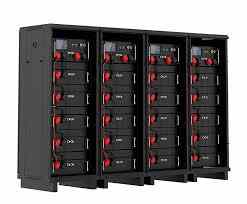
À Gycx Solar, notre 48v batterie montée en rack Les solutions sont au cœur des systèmes énergétiques avancés que nous concevons. Ils fournissent à nos clients en Corée du Sud et au-delà avec un puissant, flexible, et une base future pour leur indépendance énergétique. Répondons à certaines des questions les plus courantes sur la construction d'un système avec ces batteries.
Comment se connecter 4 batteries pour obtenir 48 V?
Une façon courante de construire une banque de batteries 48 V dans le passé était d'utiliser plus petit, batteries plus courantes. Comment est-ce fait, Et comment se compare-t-il à l'utilisation d'un module de batterie à rack 48V moderne?
Pour créer un système 48V à partir de quatre batteries individuelles, vous devez en utiliser quatre batteries 12V identiques et les connecter électriquement en série. Cela signifie les câbler dans une chaîne: le positif (+) Le terminal de la première batterie se connecte au négatif (-) de la seconde, le positif (+) de la seconde se connecte au négatif (-) du troisième, et ainsi de suite. La tension totale sur les bornes ouvertes restantes sera de 48 V.
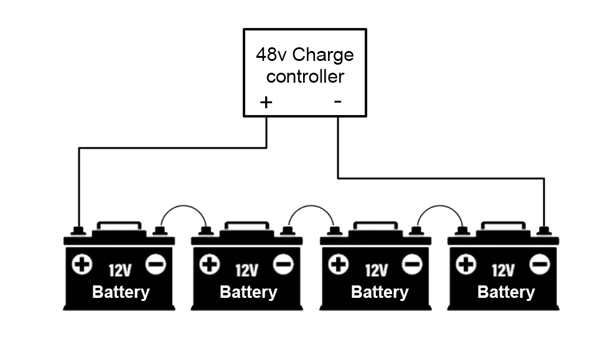
Plonger plus profondément: Le câblage de la série et la solution moderne
La connexion des batteries en série nécessite une attention particulière aux détails:
- Le "identique" Règle: C'est la partie la plus critique. Lors de la connexion en série, les quatre batteries 12V Doit être identique en chimie (Par exemple, Tous les LFP ou tous les AGA), heure d'ampli (Ah) capacité, marque, et, idéalement, Âge et lot de fabrication. L'utilisation de batteries incompatibles provoquera de graves déséquilibres, conduisant à une mauvaise performance, Échec prématuré des batteries les plus faibles, et les risques de sécurité potentiels.
- Le chemin de câblage: Vous créez un seul chemin pour que le courant circule à travers toutes les batteries. La sortie 48 V finale est tirée de la borne positive principale de la première batterie de la chaîne et de la borne négative principale de la dernière batterie.
- L'avantage moderne: C'est là qu'un moderne 48v batterie montée en rack Le module montre sa valeur. Un seul de nos modules est déjà une unité 48V pré-ingérée.
- Simplicité: Vous n'avez pas à vous soucier du câblage des séries complexes ou du risque de cellules incompatibles.
- Sécurité: Chaque module 48V contient son propre système de gestion de batterie avancé (GTC) qui équilibre parfaitement toutes les cellules internes, Une tâche beaucoup plus difficile dans une chaîne de séries de bricolage de batteries 12V.
- Évolutivité: Pour augmenter votre capacité énergétique, vous ajoutez simplement un autre module 48 V en parallèle, qui est une connexion beaucoup plus sûre et plus simple.
Pendant que vous peut faire une banque 48V à partir de quatre batteries 12V, L'utilisation de modules 48V spécialement conçus est le plus sûr, plus simple, et une approche plus professionnelle.
Combien de temps 48 Batterie Volt 100Ah Dernière?
Une batterie 48V 100AH est une taille très populaire pour le stockage solaire résidentiel. C'est une quantité substantielle d'énergie, Mais combien de temps peut-il réellement alimenter votre maison? La réponse dépend entièrement de votre consommation d'électricité.
UN 48Batterie V 100h magasins 4,800 wattheures (Wh) ou 4.8 kilowattheures (kWh) d'énergie. Combien de temps il sera calculé en divisant cette énergie totale par votre charge électrique (en watts). Par exemple, il pourrait alimenter un continu 480-watt charge pour environ 10 heures, ou un briquet 200-watt charge pour environ 24 heures.
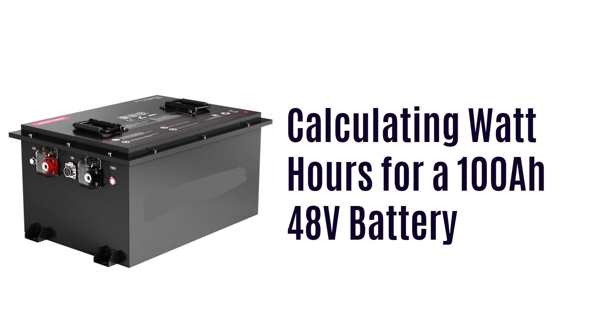
Plonger plus profondément: Calcul de votre runtime
Passons à travers les mathématiques simples:
Étape 1: Trouvez l'énergie totale dans les wattheures (Wh)
- Formule:
Energy (Wh) = Voltage (V) x Capacity (Ah) - Calcul:
48V x 100Ah = 4,800 Wh(ou 4.8 kWh)
Étape 2: Calculer l'exécution en fonction de votre charge
- Formule:
Runtime (Hours) = Total Energy (Wh) / Load (Watts)
Exemples de scénarios pour un ménage coréen:
- Charges essentielles (environ. 300O): Disons lors d'une panne, Vous exécutez votre réfrigérateur à haute efficacité, Quelques lumières LED, Votre routeur Internet, et charger vos téléphones.
4,800 Wh / 300 W = 16 hours
- Charges modérées (environ. 800O): Vous ajoutez un téléviseur et un ordinateur de bureau à l'essentiel.
4,800 Wh / 800 W = 6 hours
- Charge forte (environ. 2,000O): Vous décidez d'exécuter un climatiseur portable ou un appareil de haute puissance.
4,800 Wh / 2,000 W = 2.4 hours
C'est pourquoi notre solaire Gycx 48v batterie montée en rack Les systèmes sont modulaires. Un 100h (4.8kWh) Le module est un excellent point de départ, Mais si vous avez besoin d'un temps d'exécution plus long, Nous pouvons facilement ajouter un deuxième ou un troisième module en parallèle pour doubler ou tripler votre capacité.
De combien de panneaux solaires avez-vous besoin pour une batterie 48 V?
Vous avez votre 48Batterie V système; Maintenant, vous devez le charger avec l'énergie solaire. Comment taillez-vous votre réseau solaire pour vous assurer que vos batteries sont chargées efficacement chaque jour?
Le nombre de panneaux solaires nécessaires dépend de la capacité de votre batterie, Le climat de votre emplacement, Et la puissance des panneaux. Pour recharger de manière fiable un 48En 100h (4.8 kWh) batterie quotidiennement dans un climat comme la Corée du Sud, avec ses saisons distinctes, Vous auriez généralement besoin d'un tableau solaire de environ 1.5 kw à 2.5 kW. Cela se traduit par environ 4 à 6 moderne, Panneaux solaires à haute efficacité 400W.
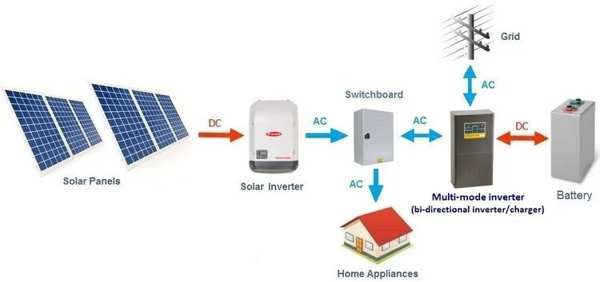
Plonger plus profondément: Dimensionnement pour un climat de quatre saisons
Voici comment nous approchons du dimensionnement d'un tableau solaire au Gycx Solar:
- Énergie pour reconstituer: Nous devons remettre l'énergie que vous utilisez quotidiennement. Pour un 4.8 batterie kwh en utilisant 90% de sa capacité, c'est à peu près 4.3 kWh.
- Hautes du soleil de pointe (Psh): C'est la variable clé. En Corée du Sud, Cela change avec les saisons. Tu pourrais obtenir 4.5-5 PSH en été, mais seulement 2.5-3 PSH en hiver. Nous dimensions souvent le tableau basé sur une valeur moyenne ou printemps / automne toute l'année (Par exemple, 3.5 - 4 Psh) Pour assurer une charge adéquate pour la majeure partie de l'année.
- Pertes de système: Nous rendons compte de l'énergie perdue de la chaleur du panneau, câblage, et efficacité de l'onduleur / du contrôleur de charge (généralement un 15-25% facteur de perte).
- Le calcul:
- Énergie solaire requise (kW) = Énergie quotidienne nécessaire (kWh) / (PEAK SUN HEURES X FACTEUR D'EFFICICATION)
- Exemple (basé sur un conservateur 3.5 Psh):
4.3 kWh / (3.5 hours x 0.80 efficiency) = 1.54 kW (1540 Watts) - Cela signifierait
1540W / 400W per panel ≈ 4 panels. Être sûr et assurer une bonne charge même les jours moins que parfaits, Nous pourrions recommander 5 ou 6 panneaux.
Gycx Solar Story: "Un client à Séoul était préoccupé par la charge d'hiver pour son système de batterie 48 V. Nous avons conçu leur tableau basé sur les données de l'heure du soleil d'hiver inférieures, S'assurer que même par une claire d'hiver, Leurs batteries recevraient une charge significative. C'est ce type de planification spécifique au climat qui rend un système fiable toute l'année."
Puis-je utiliser des panneaux solaires 12V sur un système 48V?
Vous pourriez avoir accès à certains panneaux solaires 12V standard et que vous souhaitez les utiliser pour charger votre nouveau, Banque de batterie 48 V plus efficace. Est-ce possible, ou sont-ils incompatibles?
Oui, Vous pouvez utiliser des panneaux solaires 12V sur un système 48V, mais seulement avec la bonne configuration. Toi Doit câbler les panneaux 12V en série Pour augmenter leur tension combinée à un niveau suffisamment élevé pour charger une batterie 48 V. En plus, toi Doit utiliser un MPPT de haute qualité (Suivi du point de puissance maximal) contrôleur de charge solaire, qui peut gérer efficacement la différence de tension entre les panneaux et la batterie.
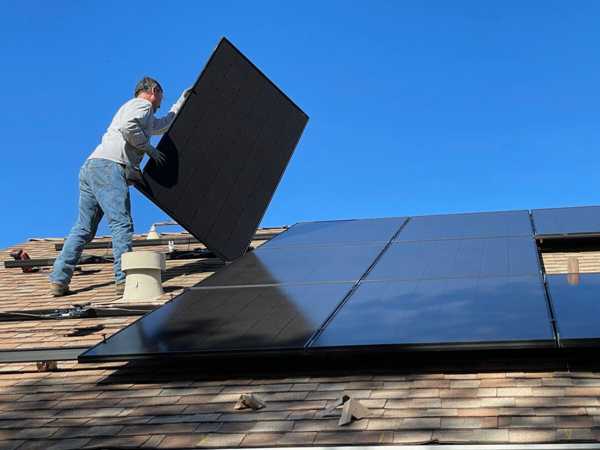
Plonger plus profondément: Les clés de la compatibilité
Voici ce qui est nécessaire pour que cela fonctionne:
- Connexion en série de panneaux: Pour charger une batterie 48 V, Votre réseau solaire doit produire une tension nettement plus élevée (généralement 60 V ou plus). Un seul "12v" Le panneau a généralement une tension de puissance maximale (VMP) d'environ 18V.
- Donc, Vous devez vous connecter au moins Quatre panneaux 12V identiques en série (positif à négatif) Pour atteindre une tension système appropriée (4 panneaux x ~ 18vmp = ~ 72V).
- Un contrôleur de charge MPPT est essentiel:
- Un PWM bon marché (Modulation de largeur d'impulsion) Le contrôleur ne peut pas être utilisé. Il faut que la tension du panneau soit très proche de la tension de la batterie.
- Un Contrôleur MPPT est un convertisseur DC à DC sophistiqué. Il peut prendre la haute tension de vos panneaux câblés en série (Par exemple, 72V) et pas efficacement "passez" à la tension de charge correcte pour votre batterie 48 V, capturer la quantité maximale de puissance de vos panneaux dans le processus.
- L'approche professionnelle: Alors que l'utilisation de panneaux 12V est techniquement possible, Les conceptions du système moderne pour les batteries 48 V utilisent généralement des panneaux à haute tension dès le départ (Par exemple, "24V" panneaux ou panneaux résidentiels standard 60/72-cellule avec un VMP de 30-40V). Le câblage seulement deux d'entre eux en série est plus simple et souvent plus efficace.
Cela met en évidence l'importance de la conception du système. À Gycx Solar, Nous nous assurons de chaque composant, des panneaux solaires au contrôleur de charge et au 48v batterie montée en rack, est parfaitement adapté à une sécurité optimale, performance, et efficacité.
Une batterie de rack de serveurs est une pierre angulaire de moderne, Stockage d'énergie évolutif. Comprendre comment configurer, charge, et taille un système autour d'un 48V Standard1 est la clé pour débloquer ses avantages. En utilisant des modules 48V construits à dessein, Vous simplifiez l'installation et améliorez la sécurité, Création d'une base robuste pour votre indépendance énergétique2.
Si vous avez des questions sur la conception de votre propre système d'énergie 48V ou si vous souhaitez en savoir plus sur nos solutions professionnelles de batterie de montage à rack, Notre équipe d'experts de GYCX Solar est prête à aider. Contactez-nous pour une consultation!
L'exploration de ce lien approfondra votre compréhension du rôle de la norme 48V dans le stockage d'énergie, Améliorer l'efficacité de votre système. ↩
Cette ressource fournira des informations sur la réalisation de l'indépendance énergétique, crucial pour la vie durable et réduisant la dépendance à l'égard des sources d'énergie traditionnelles. ↩
